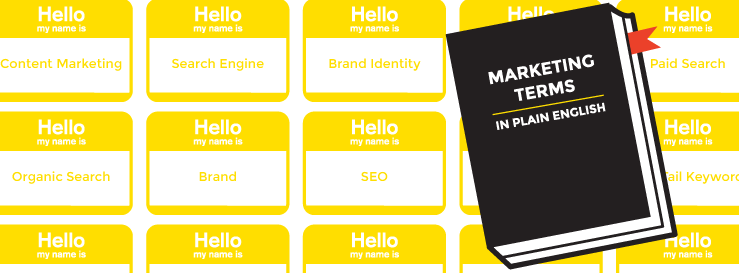
While it’s easy to find marketing articles online that use terms like content marketing, branding, and SEO, they often come off as buzzwords that seem overused to the point where they appear to have no meanings to them anymore. It’s always good to go back to the basics and examine these terms using simple everyday language that people can actually understand. It would be bad if they just become industry jargons that only Marketing folks use and clients have no clue what they mean but are too afraid to ask.
Here are a few common marketing terms that we come to encounter regularly.
- Brand
- Branding
- Brand Identity
- Search Engine
- Long Tail Keyword
- Search Engine Optimization (SEO)
- Paid Search
- Organic Search
- Content Marketing
- Content
Brand
It’s the way people feel about a company or a product/service.

The concept of a brand can be pretty much demonstrated by how you feel differently about Pepsi and Coke, Apple and Microsoft, or Nintendo and XBox, even though their products are very similar. A brand is the emotional connection we have towards a company or a product/service. It’s the descriptive words that come to mind when we hear their names. Having a successful brand distinguishes you from the rest of the competition and make people fall in love with your company. They are more likely to purchase from you with this positive connection.
Branding
A company’s actions influence how people feel about them.
People’s perception about a company—a brand—is shaped by experiences through direct and indirect interactions. This is not limited to a company’s marketing efforts, but other factors also impact the way people feel about a company. This includes everything from whether your company lives up to the promises you made about your products/services, how employees treat customers, to how your customer service team handles support calls.
The term branding and brand is often confused as the same thing but there is a slight difference. A brand (the public’s collective opinion of a company) is created as a result of branding efforts (defined by the company’s initiatives and actions).
Brand Identity
Expressing a company’s personality through visual design and communication style.
Brand identity is similar to why people dress or talk a certain way in order to express to others who they are and what they care about. Simply put, this includes all visual components of the company—a company’s logo, fonts, colors, images—down to the way their staff communicates with the public. Companies have control over these elements to help people make meanings about them as a brand.
Design Logo Love’s website has great examples of brand identity style guides from global brands. The purpose of having guidelines is to set a standard so employees have a consistent and unified voice when communicating to the public. These guides express a company’s brand in a clear and concise format.
Here is an example of Skype’s identity style guide:
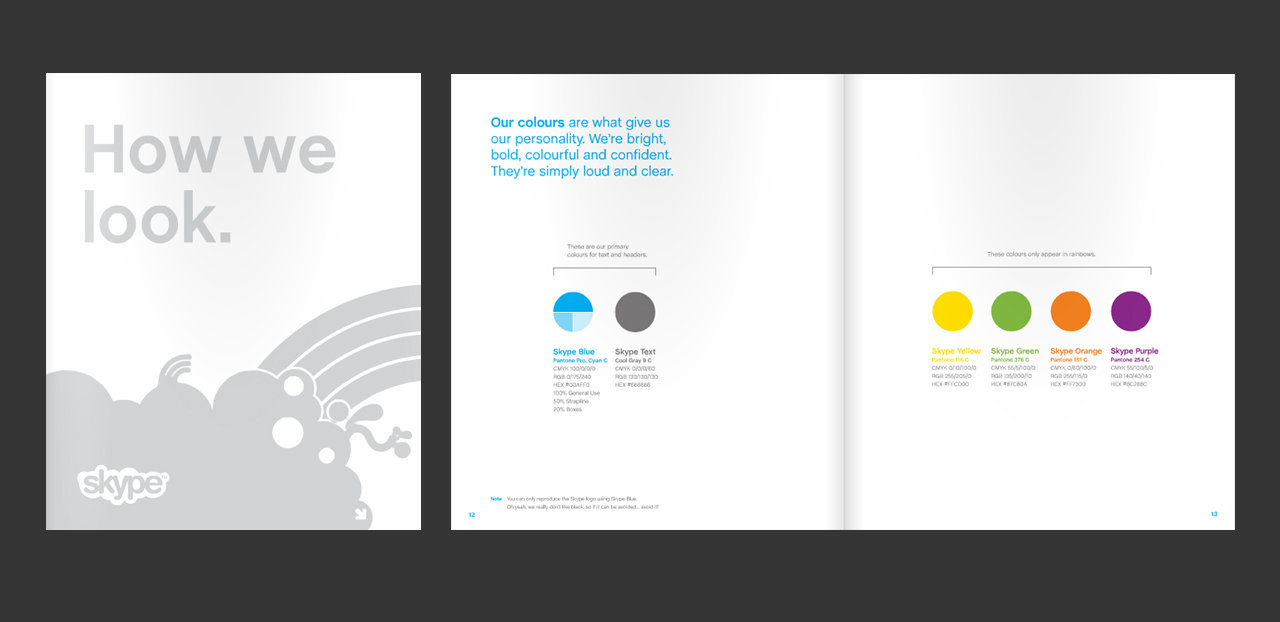
Search Engine
A system that searches data on the Internet and helps people find what they are looking for based on the words typed in the search field.
A search engine act as a directory that helps users find what they are looking for online by filtering through vast amount of information. Search engines are not mind readers. They depend on the users to type in the relevant words to understand exactly what they are looking for to help them search for the information. Search engines are important to businesses because they can drive web visitors to their websites if links related to their company are listed close to the top of search results.
Popular Search Engines in the World
(Market Share as of September 2015)
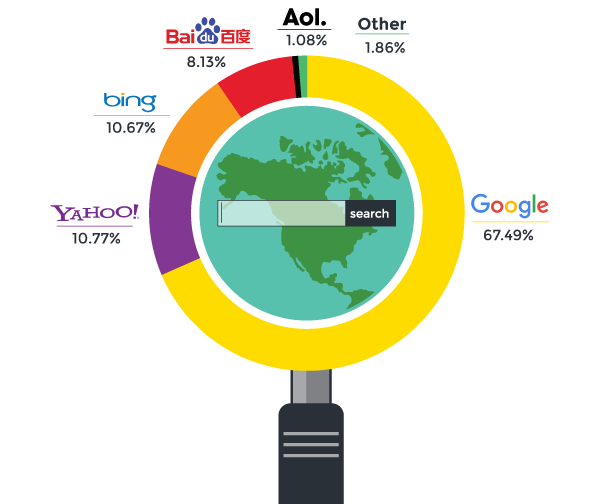
Source: Wikipedia, Most popular Internet search engines
Some search engines are more popular than others in certain parts of the world. Google is popular in North America but not East Asian countries and Russia. In Russia, Yandex is most commonly used in the country and Baidu is the most popular search engine in China. Naver is used in 70% of the online inquires in South Korea while Yahoo! is most used in Japan and Taiwan.
Long Tail Keywords
A few words or a phrase typed in the search engine to produce more relevant search results as opposed to typing only one word.

People who use long tail keywords yield more specific search results than people who use only one word to search because they narrow down exactly what they are looking for. A person looking to buy a pair of specialized running shoes would get better search results if he/she typed “best trail running shoes” than just typing a generic word like “shoes”, which shows up search results for boots, high heels, and everything in between.
This is an important point to keep in mind when we understand how potential customers search for your products/services online and how to use these keywords on your website. While it’s easy to think of keywords commonly used within your industry, it might not be intuitive for people outside your industry to find your company based on the terminology or industry jargon that you use. Potential customers have a higher chance of finding your company if you use the same keywords on your website they use when searching for your products/services on search engines.
Paid Search versus Organic Search
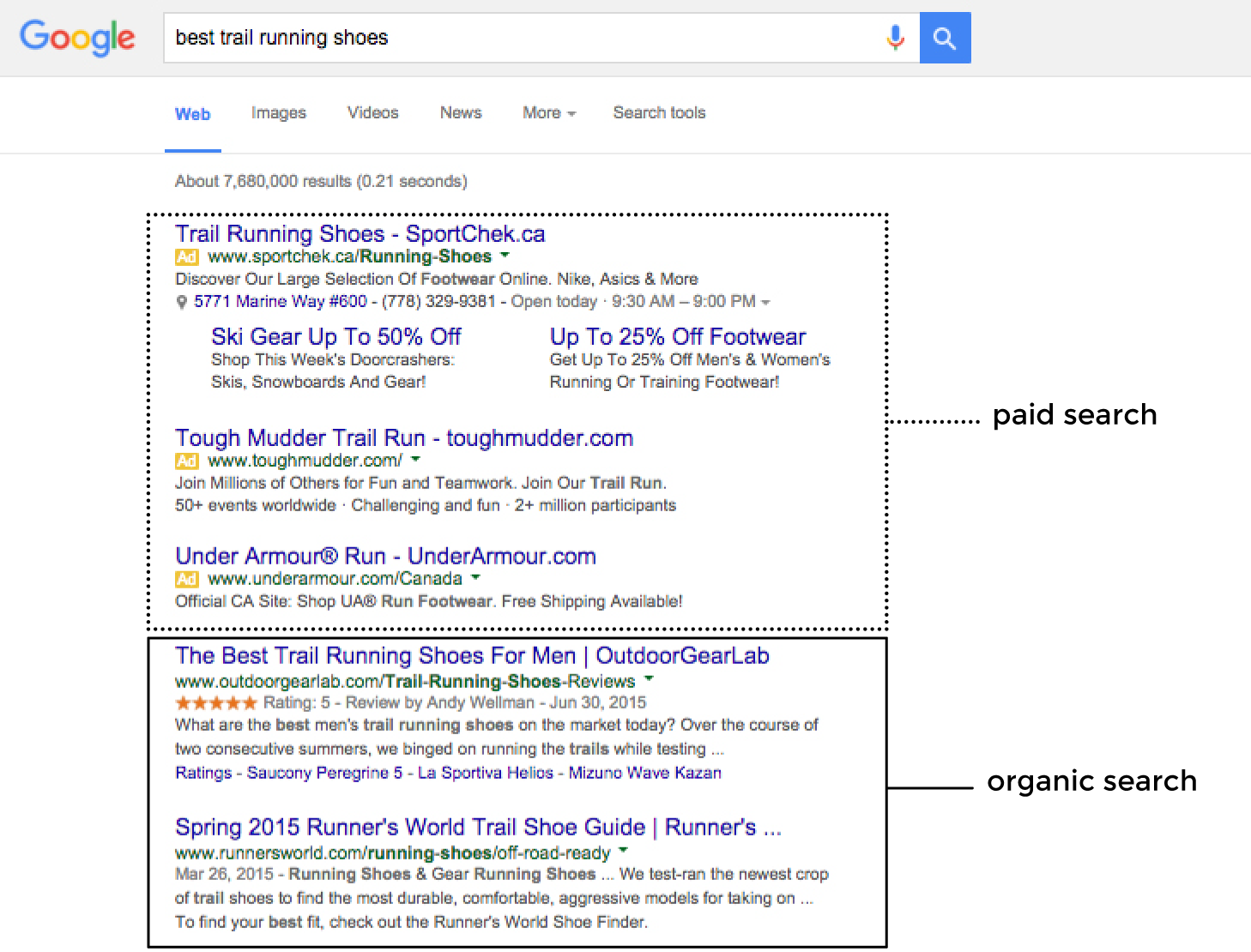
Paid Search: Online advertisements that appear on the search results pages based on the keyword(s) a user types into the search engine. Also referred to as search engine advertising, non-organic search, or pay-per-click (PPC) advertising.
Companies that use paid search as a form of advertising are required to pay a fee to search engines when a user clicks on the advertisement. Similar to placing an ad in magazines or newspapers, companies pay for these types of advertising, such as Google Adwords, in order to get noticed by users who might be interested in their products/services. Companies specify which keywords they want their ads to appear when users type the keywords while running a search. They are marked as “Ad” to help people distinguish the difference between companies that paid for an ad. They typically appear first in search engine results, followed by organic search results.
Organic Search: Unpaid search results that pops up after a user types in specific keyword(s) in the search engine because they are the relevant and most searched information.
Paid search makes it easy for companies to reach the first page of search results by paying. However with paid search, when you stop paying you are no longer listed in the search results. Organic search is perceived as having more authority than paid search because these listings are free and you have to earned your way to get to the top. Organic search listed on the first page of search results are what the search engines deemed as being the most relevant and popular information pertaining to the specific keywords used in search. Most companies strive to get to the first page of search results for keywords they perceive as important. Because search engines generate tons of results, if your company ranks high on the list, there is a higher chance people will click on the link and visit your website.
Search Engine Optimization (SEO)
Improving a company’s ranking position on organic search results (as opposed to paid search) for specific keywords to increase the chances that people will visit your website.
The goal of search engine optimization is to get your company to rank high in naturally occurring search results (organic search) in order to get more people to visit your website and ultimately turn them into customers. Search engines have sophisticated algorithms to determine search result rankings. There are many factors that affect the way how search engines rank organic search results. Optimizing your website for search engines in terms of the way your website is designed, coded, and structured, down to the writing on each webpage are all things you can control to help improve SEO. This is known as on-page SEO. Other factors, known as off-page SEO, are often things you don’t have control. This includes the quantity and quality of websites that is linking to your website. If credible companies put your links on their website, search engines will find your website as being more trustworthy and it improves SEO.
Content Marketing
Providing useful information and sharing it with the world to attract, connect, and win customers.
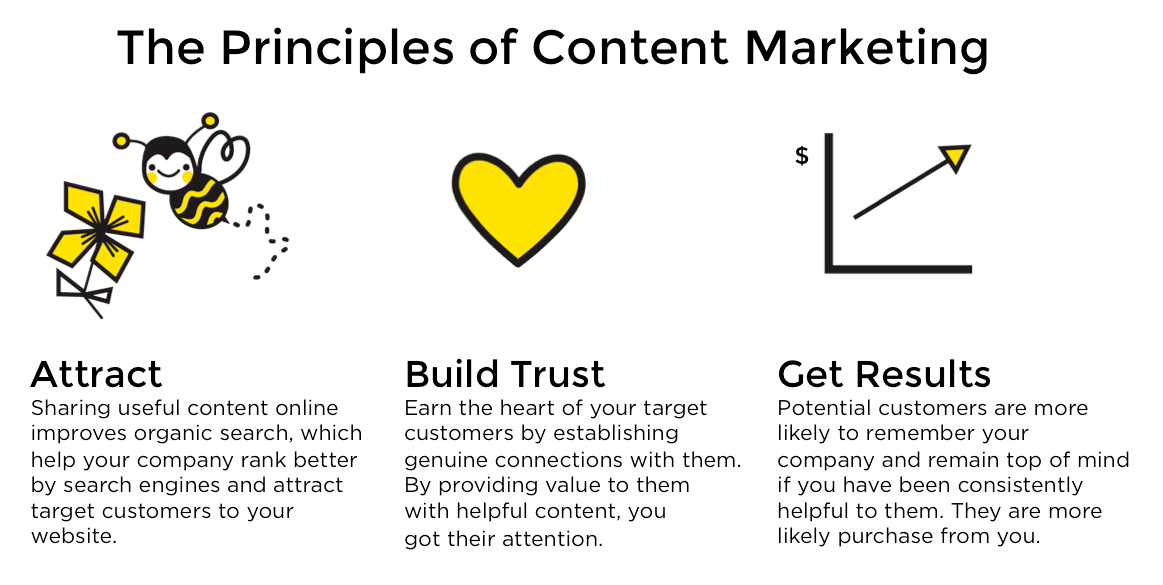
Content marketing adds value. It focuses on showing potential customers why they should buy from you rather than simply making claims that your product/service offerings are the best, “We have the best product ever!”. Instead of going out there to create a demand by actively contacting people through cold calling or spamming, you are providing useful information potential customers would find interesting and attracting them to learn more about your company.
The concept of content marketing is not new. In 1900, Michelin developed the Michelin Guide to provide drivers with information on auto maintenance, accommodations, and other travel tips. The purpose of the guide was to increase the demand of cars, and subsequently for tires. The guide has since became well-known for awarding Michelin stars exclusively to fine dining restaurants around the world.
The focus is to create relationships with potential customers by offering them something of value and in return sales will follow. Learn more about content marketing by reading the blog post A Simple Guide to Content Marketing.
Content
Any information presented in a way potential customers would find interesting.
Content can be in the form of an article, video, podcast, or photo. Essentially anything that your potential customers perceive as appealing and would attract them to read, watch, listen, or use.
Content Examples:
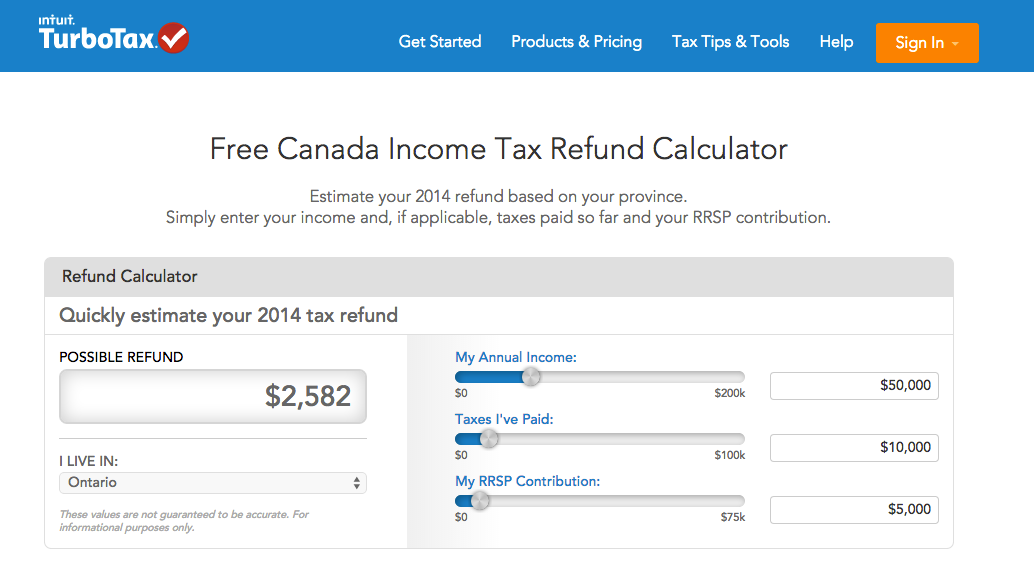
Turbo Tax is an income tax software that allows users to easily file their taxes themselves. They provide tax tips through tax resources and offers a tax refund calculator on its website to attract potential customers.
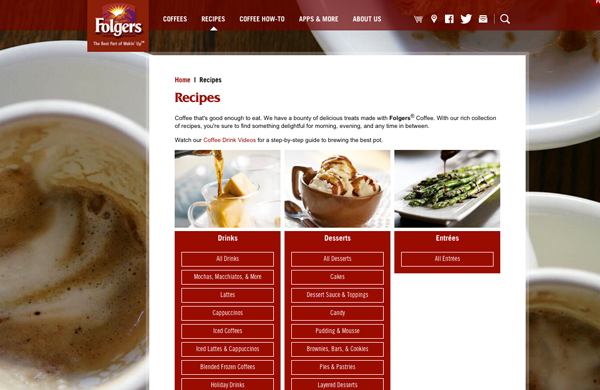
Folgers is a coffee maker offering recipes and educational videos on their website to encourage people to purchase their coffee.
Content shows your knowledge in your area of expertise and builds credibility. You become a company people can trust. As a result, they are more likely to purchase from you when they have a need for your products/services.
Share:

